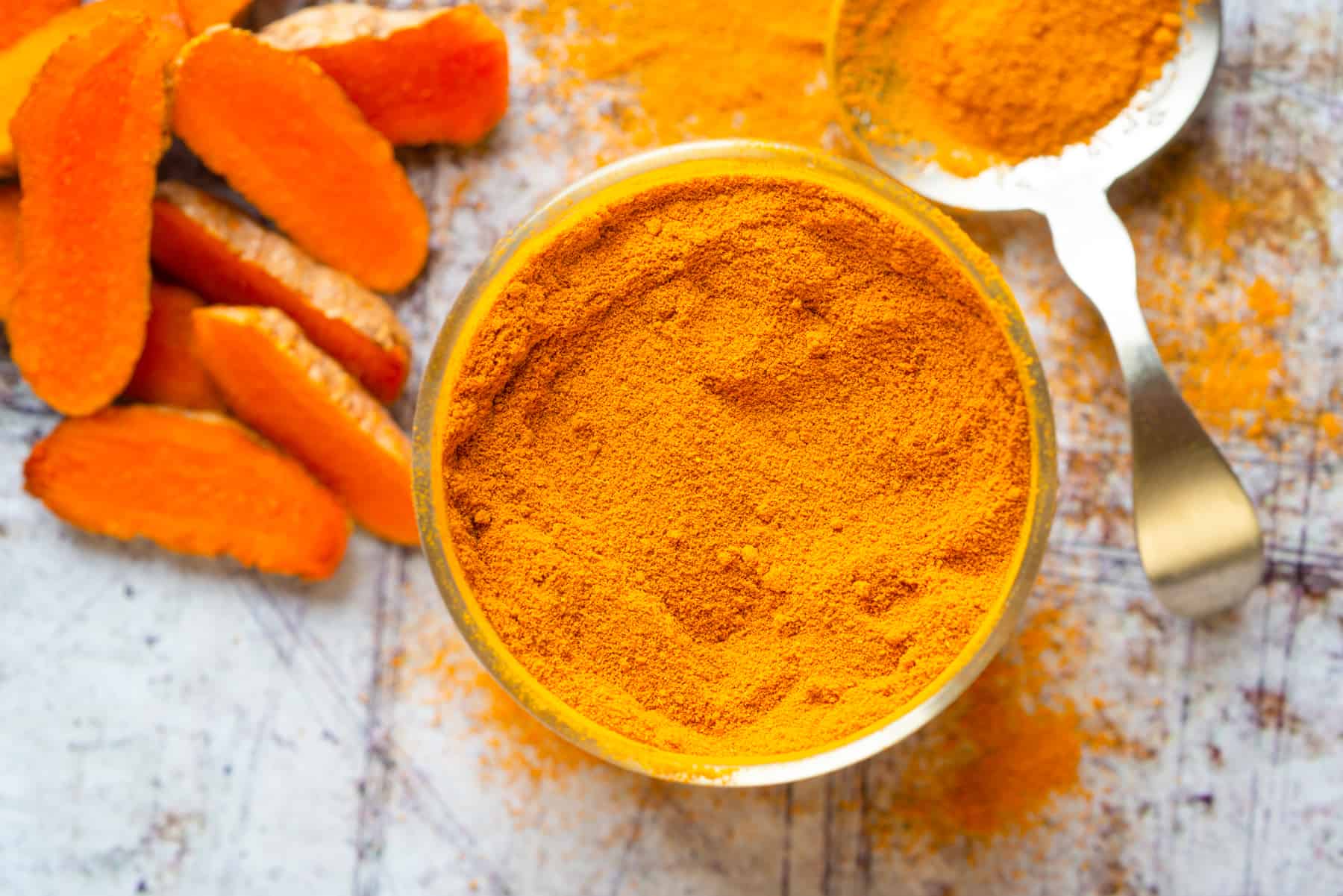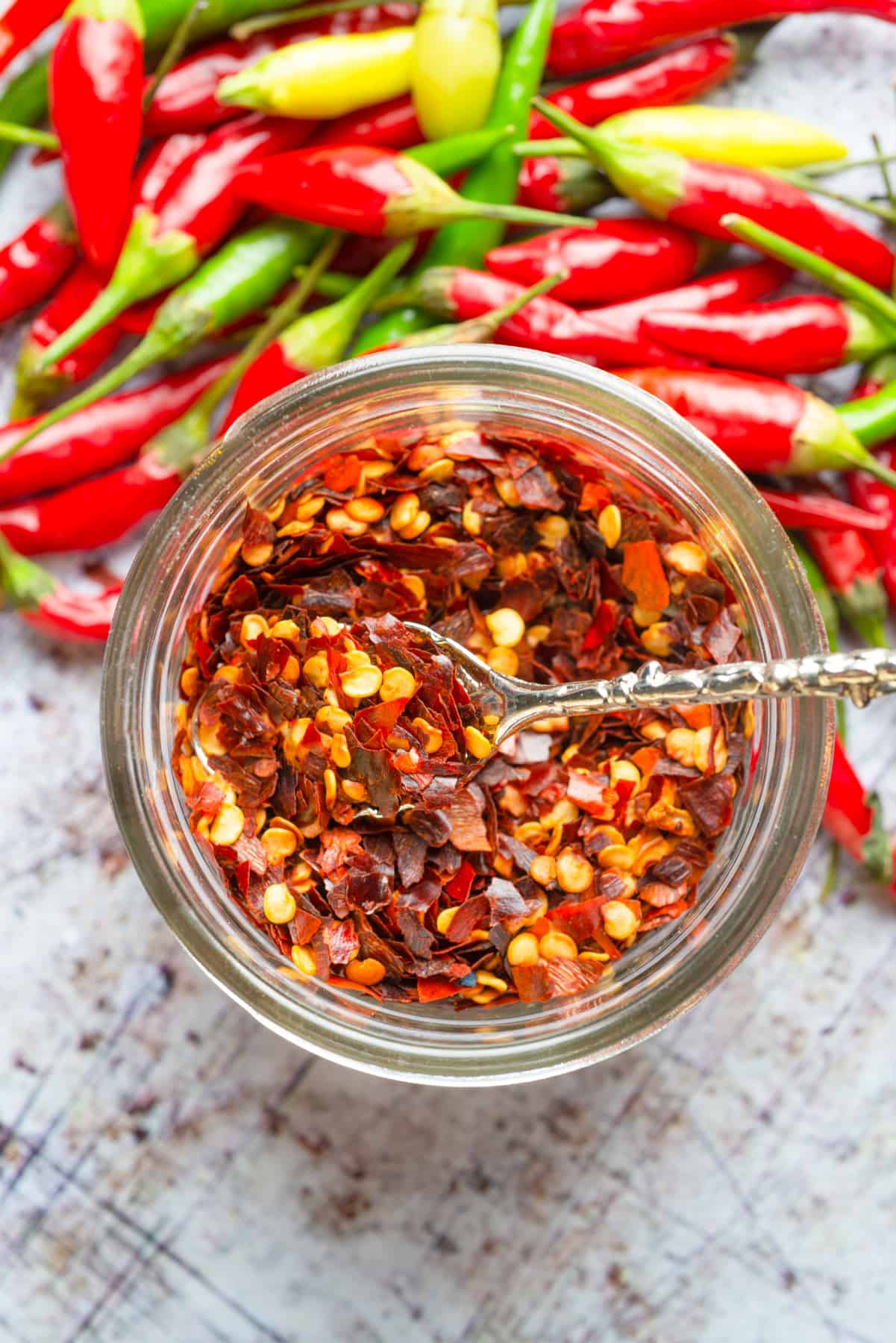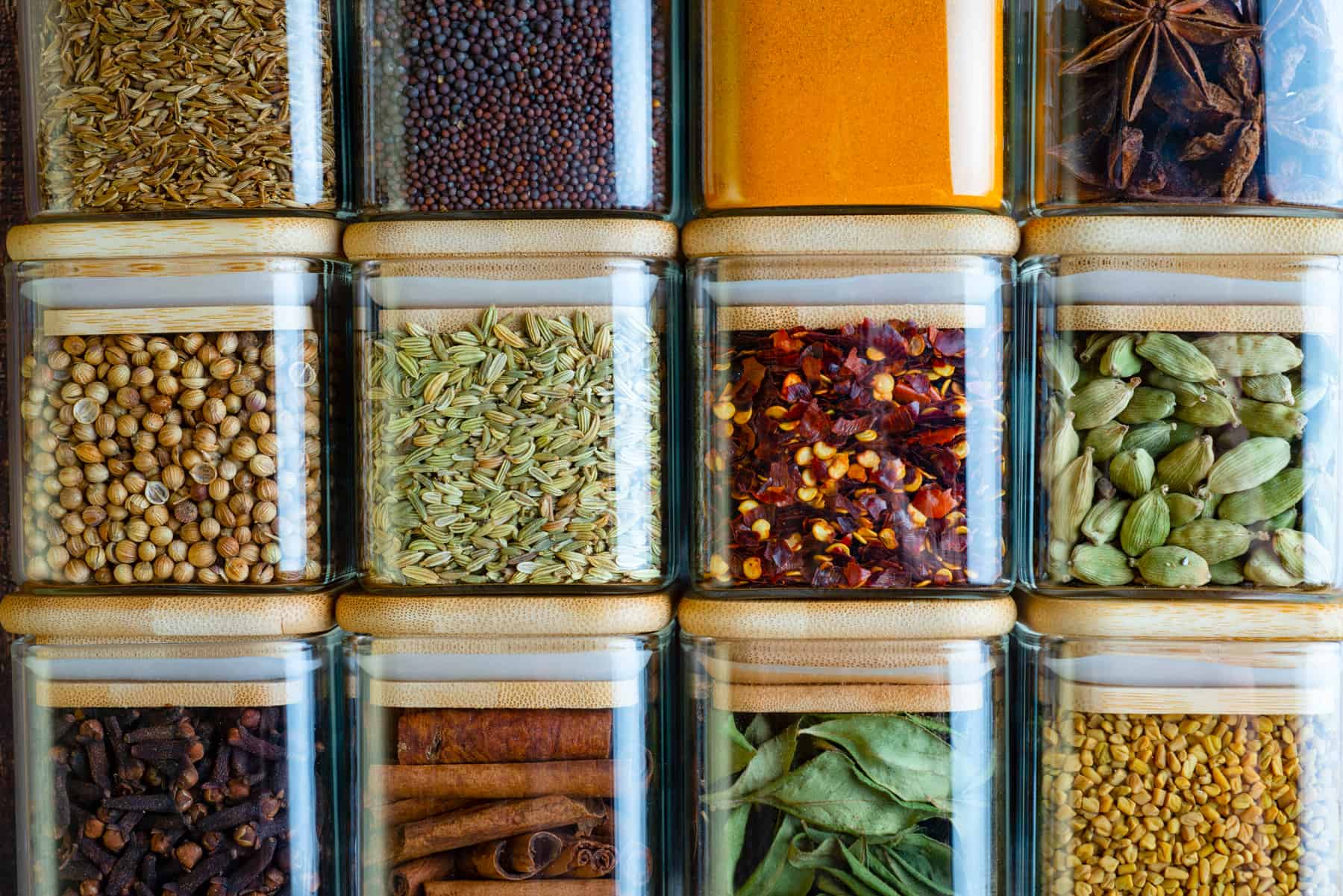By Samantha Simma // Photography by Paulette Phlipot
—
A kitchen stocked with a myriad of cooking tools and utensils won’t equate to a home chef’s success, unless the spice cabinet is equally well-equipped. The Food and Drug Administration (FDA) defines spices as “aromatic vegetable substances in the whole, broken, or ground form, whose significant function in food is seasoning rather than nutrition.” But the role of spices is much more than that—these flavorful concoctions contribute taste, color, and aromatics to dishes, and the array available is as vast and diverse as the world’s cultures.
Chef Chas Baki, partner at Provisions, a local catering company and private chef service, puts it best.
“Spices add nuance to flavor,” he says. “A roast chicken is great by itself, but rub it down with smoked paprika and it’s going to taste even better.”
Storage
As various recipes call for different spices, it can be easy for spices to stack up in your storage space. So, for the sake of freshness, it’s important to develop an efficient system of organization. Popular storage methods include wall-mounted racks, turntables, spice drawers, and tiered shelving. Beyond that, your manner of organization—alphabetically or by cuisine—is a matter of preference. What’s essential is that each spice is stored in a sealable container and is clearly labeled with the spice’s name and its date of purchase. Use nonporous containers—like glass or ceramic jars—and keep them small, refreshing the contents frequently. The storage location you choose for your spices should be cool, dry, and out of direct sunlight. By avoiding exposure to air, moisture, and heat, spices can be kept fresh for a longer period of time.
Spices in the red pepper family—including paprika and chili powder—will retain their color and flavor longer if they’re stored in the refrigerator. Seeds like poppy and sesame should also go in the fridge to keep their natural oils from going rancid.

Freshness
And that brings us to freshness.
Baki explains, “When you toast or warm a spice, you activate the release of its aromas.”
So don’t store your spices near a stove or other heat source, as the heat may activate the spice prematurely within its storage container. Also, when using a spice, be careful not to sprinkle it directly over a steaming dish or pan. The heat and moisture from cooking can waft into the open spice container, causing the rest of the its contents to clump or harden when it goes back on the shelf. Similarly, if you’re dipping into a spice container with a measuring tool, make sure it’s completely dry.
Spices are derived from various plant parts, including seeds, bark, roots, fruit, or stems, while dried herbs are made solely from the plant’s leaves. Neither will make you ill as they age, but over time, both will lose their flavor and potency. The lifespan of a spice or dried herb depends on: 1. How it was processed, and 2. How it is stored. A good rule of thumb is to only keep dried herbs 1 to 3 years, ground herbs and powdered spices for 2 to 3 years, and unground, whole spices can be kept up to four years.
Get into a routine of regularly auditing your spice stock, refreshing it every six months. If you’re unsure about a spice, rub a pinch of it into the palm of your hand. Warming the spices just slightly with your body heat will encourage the release of the spice’s aroma, which is the best indicator of its freshness. If the color is looking pale and lackluster when you spread it on your hand, and the aroma is weak, the spice is past its prime. If you must use an aged spice, be cognizant of the loss in potency. You’ll need to incorporate more to yield the desired strength of the spice in the final dish.

Purchasing
“Buy only small amounts of spices,” Baki recommends.
Avoid bulk spice containers—what you save in cost will be a loss in flavor over the time it takes you to use the entire container. If you’re able, opt for whole spices and only grate or grind the amount you need when you’re preparing a meal.
“If you want more bang for your buck, spice blends are the ticket,” Baki adds.
For the novice chef, he suggests getting familiar with one spice at a time.
“See how you like it, and how it pairs with different food. Gain a baseline knowledge and compound on that,” he advises. “You can always put more in, but you can’t take it out. Layer flavor over time—start with a little, taste it, add more, taste it, and get to the point where the dish’s flavor has brightened.”
Spices to Have On Hand
- Garlic Powder: Garlic powder provides a great shortcut when fresh garlic isn’t available. Stick to one without added herbs or flavorings.
- Cinnamon: While crucial to many baking recipes, cinnamon can add depth to savory dishes, too.
- Bay Leaves: Dried bay leaves add a subtle, woodsy aroma to dishes. Test the leaves for freshness by snapping a leaf in half—it should yield a spicy, floral scent.
- Paprika: In the same family as cayenne, yet milder, paprika adds a smoky flavor to your cooking.
- Cumin: You’d be hard-pressed to find a substitute for the earthy, slightly nutty, notes of cumin. Its versatility makes it a popular component of spice blends.
- Dried Oregano: Fundamental to many Mediterranean and Latin American dishes, dried oregano inflects a warm, slightly bitter, flavor on dishes in which it’s incorporated.
- Cardamom: A little goes a long way when using complex cardamom. With fragrant notes of mint and pepper, this spice is best stored whole and ground on the fly.
- Turmeric: Part of the ginger family, this yellowly-orange spice adds a bright, floral flavor to a variety of dishes, beyond just the Indian and Thai plates it’s known for.
- Black Peppercorns: Called for in practically every savory dish, the strength of black pepper’s flavor is stored in whole peppercorns, as the oils break down more slowly in its whole form.
- Red Pepper Flakes: From homemade marinara sauce recipes to topping your takeout, red pepper flakes are the go-to spice for adding heat to your meals.

